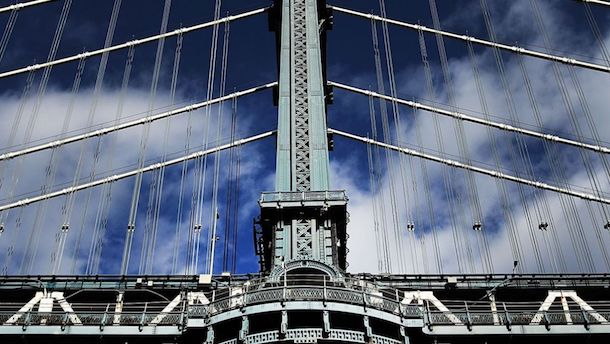For several years now, concerns about the United States' crumbling infrastructure have garnered cross-party support within the country's government. There is no question that U.S. roads, bridges, airports and water pipes all need fixing, but how to do that is a different story. On Feb. 12, the White House put forward its much anticipated $1.5 trillion plan to revitalize the country's infrastructure. It specifies that $200 billion will come from the federal government, with the rest of the money coming from a combination of state and local funding and the incentivization of private-public partnerships. A strong infrastructure is essential to the economic well-being of the country, providing jobs and supporting supply chains, and there is potential for the administration's strategy to succeed in some areas. However the plan will struggle to prevent further deterioration of some of the most deficient areas of infrastructure, such as drinking and wastewater treatment.
The Nitty Gritty
The 53-page document follows the spirit of less specific proposals put forth by President Donald Trump both on the campaign trail and during his first year in office, emphasizing the goal of reducing government regulations and oversight. Over the next 10 years, the federal government intends to distribute half of the $200 billion to projects in the form of incentive grants, and it will evaluate applications based largely on how the programs will be funded and will generate profits. The grants will also be conditional on the federal government providing only 20 percent of the total project costs. The other half of the $200 billion will go to a variety of other projects and initiatives, with $50 billion earmarked for rural infrastructure. The remaining $1.3 trillion is expected to come from investment using state and local funds and private-public partnerships.
Because Congress has already approved a two-year budget, there will probably be major adjustments to the final infrastructure plan, and any agreed-upon plan will likely take several more years to enact. But the U.S. infrastructure problem isn't going away in the meantime. The current gap between the amount of infrastructure funding needed and the amount available is $1.4 trillion, and infrastructure throughout the country recently earned a failing score from the American Society of Civil Engineers (ASCE). The group expects that federal spending will need to be at 3.5 percent of GDP by 2025, up from the past decade's average spending of 2.4 percent of GDP. According to the ASCE, a failure to improve U.S. infrastructure will cost each household $3,400 annually. At a national level, the country will lose $4 trillion in GDP growth and 2.5 million jobs by 2025.
The recently released plan to put a majority of the funding burden on state and local governments and on private companies isn't actually that different from the current situation. State and local governments already account for the majority of public spending on nondefense infrastructure. But over the past decade, public spending, which has stagnated since the 1980s, has fallen even further as states have started cutting their own spending as part of their gross state product. At present, most infrastructure investment capital comes from bond proceeds, dedicated fees and surpluses.
This new proposal outlines a number of strategies to promote private investment, which currently makes up a small percentage of overall infrastructure spending and is concentrated in the rail sector. Plans include increasing tolling flexibility, which allows states more freedom over where they can apply interstate tolls and how much they can charge, and expanding programs that enable easy access to credit. However, even with major incentives, it can — and will continue to be — hard to sell some infrastructure projects to the private sector.
Water, Water Everywhere
It's difficult to recoup funds and to profit from infrastructure projects, which tend to require significant upfront capital. Some projects, such as toll roads, come with obvious solutions for getting a return on investment (though rural areas with lower traffic still struggle more than urban areas with higher traffic). But water infrastructure is the sector that will have the hardest time attracting private investment if the Trump administration's plan goes into effect. Currently, water and sewage only account for 2.6 percent total private investment in infrastructure throughout the world.
In the United States specifically, barriers such as high liability costs and inaccurate water pricing make it extremely hard to get investors on board. Developers did not always have long-term economic feasibility in mind while building the infrastructure to distribute much-needed water throughout the geographically varied United States, and it has long been in need of maintenance or replacement. The much-publicized water crisis in Flint, Michigan, is still fresh in people's minds, and though the incident made it clear that U.S. water infrastructure is in desperate need of repair, it also highlighted certain risks. Should something go wrong, investors may be asked to shoulder the blame in arguably a more public way than ever before.
Furthermore, water throughout much of the country is not priced at its full value, with government funds typically supplementing the costs of infrastructure, operation and maintenance. At current rates, state funds for both drinking and wastewater treatment are not sustainable, and the most obvious solution of pricing water at its actual value is a difficult proposition, especially in an election year. Few countries, the United States not among them, treat water as a true commodity.

Water prices in the United States have been increasing over the past several years; the largest 30 cities saw a rise of 4 percent over the past year, according to global resource tracker Circle of Blue. However, this increase often doesn't reflect the true value of water, which varies greatly depending on the source. Municipalities have looked toward less contentious options such as dedicating sales taxes for water and sewage projects. But even creative solutions like that won't make it easy to make a profit off water management.
There is still a long way to go before a new infrastructure plan is implemented, and it will likely look different from the one the White House recently proposed. But whatever form the new plan takes, it does have the potential to increase investment in a number of areas by incentivizing public-private partnerships. However, though there is arguably the most need for improvement in water infrastructure, that area will have the most difficulty attracting investment.






